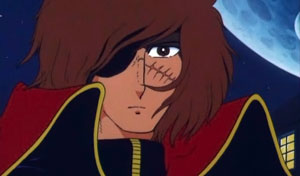
Science fiction first appeared in television programming in the late 1930s, during what is called the Golden Age of Science Fiction. Special effects and other production techniques allow creators to present a living visual image of an imaginary world not limited by the constraints of reality.

The Encyclopedia Astronautica is a reference web site on space travel. The encyclopedia includes 79,433 articles with 13,741 illustrations, a comprehensive catalog of missiles, spacecraft, space technology, astronauts, and spaceflight from most countries that have had an active rocket research program. It provides biographies of important pioneers of spaceflight such as Konstantin Tsiolkovsky, Hermann Oberth Robert Goddard. It outlines various concepts of space stations including the NASA Space Shuttle and the Soviet Buran programme.

A planetarium is a theatre built primarily for presenting educational and entertaining shows about astronomy and the night sky, or for training in celestial navigation.

Kimba the White Lion, known in Japan as Jungle Emperor, is a Japanese shōnen manga series written and illustrated by Osamu Tezuka which was serialized in the Manga Shōnen magazine from November 1950 to April 1954. An anime based on the manga was created by Mushi Production and was broadcast on Fuji Television from 1965 to 1967. It was the first color animated television series created in Japan. It began airing in North America from 1966. The later series was produced by Tezuka Productions.

Project A-ko is a 1986 Japanese action comedy science fiction anime film that had several sequels and a spin-off. This film focuses on 16-year-old Japanese teenage schoolgirl A-ko Magami, who defends her best friend C-ko Kotobuki, as they face off against their fellow classmate and rival B-ko Daitokuji while the Earth faces the threat of an alien invasion. This series references a number of other works of anime from the 1970s and 1980s, such as Gundam, Macross, and Fist of the North Star.

Osamu Tezuka was a Japanese manga artist, cartoonist and animator. Born in Osaka Prefecture, his prolific output, pioneering techniques and innovative redefinitions of genres earned him such titles as "the Father of Manga", "the Godfather of Manga" and "the God of Manga". Additionally, he is often considered the Japanese equivalent to Walt Disney, who served as a major inspiration during Tezuka's formative years. Though this phrase praises the quality of his early manga works for children and animations, it also blurs the significant influence of his later, more literary, gekiga works.

Captain Harlock is a fictional character and protagonist of the Space Pirate Captain Harlock manga series created by Leiji Matsumoto.
Captain Future is a pulp science fiction hero – a space-traveling scientist and adventurer – originally published in the United States in his his namesake pulp magazine from 1940 to 1944. The character was created by editors Mort Weisinger and Leo Margulies. The majority of the stories were authored by Edmond Hamilton. A number of adaptations and derivative works followed.

Gigantor is a 1963 anime adaptation of Tetsujin 28-go, a manga by Mitsuteru Yokoyama released in 1956. It debuted on US television in January 1966. As with Speed Racer, the characters' original names were altered and the original series' violence was toned down for American viewers. The dub was created by Fred Ladd distributed in the US by Peter Rodgers Organization.

The Milky Way is a one-reel animated cartoon short subject, produced in Technicolor and released to theatres with the film The Captain Is a Lady in 1940 by Metro-Goldwyn-Mayer. The short explores the adventures of the "three little kittens who lost their mittens", as they explore a dreamland where space is made up entirely of dairy products. The short won the 1940 Oscar for Best Animated Short Film, and was the first non-Disney film to do so. Other shorts nominated in 1940 included A Wild Hare by Warner Bros., introducing Bugs Bunny, and another MGM cartoon Puss Gets the Boot, with Jasper & Jinx, the prototype for Tom and Jerry. This makes 1940 the first time a Disney film wasn’t even nominated for the award. It was added as a bonus feature in the Marx Bros. DVD release of Go West (1940) and Warner Archive Blu-ray release of Broadway Melody of 1940 (1940).

G-Force: Guardians of Space (1986) is the second American animated television adaptation of the Japanese anime series Science Ninja Team Gatchaman (1972), following Sandy Frank Entertainment's initial 1978 effort Battle of the Planets and preceding ADV Films' 2005 attempt, known merely as Gatchaman. With G-Force, Sandy Frank Entertainment collaborated with Turner Broadcasting to create a newer, more faithful translation of Science Ninja Team Gatchaman for a new audience, and such a translation was made possible with the relaxed television standards of the 1980s, a luxury that the more Star Wars-themed Battle of the Planets did not enjoy.
Turner Program Services was the former syndication arm of Turner Broadcasting. It served the same purpose as Turner Entertainment Co.'s distribution unit, with the exception that TPS was more involved in distributing television series rather than films.

Pinocchio in Outer Space is a 1965 Belgian-American animated science-fantasy film which sets Carlo Collodi's Pinocchio character on a rocketship adventure. Peter Lazer performs the voice of Pinocchio. It was produced by Ray Goossens at Belvision Studios, with American involvement from Norm Prescott (Filmation) and Fred Ladd. The film was released in the US by Universal Pictures.
Space Strikers is a 1995 animated television series based on the 1870 Jules Verne novel Twenty Thousand Leagues Under the Sea. Episodes center around the crew of the spaceship Nautilus, led by Captain Nemo, in an attempt to liberate Earth and other planets from the control of Master Phantom. The series later premiered in France on M6 on March 8, 1995 and later aired in the United States on UPN from September 10 to December 3, 1995. Action sequences were shown in "Strikervision" 3-D.
Eduard von Borsody was an Austrian cameraman, film editor, film director, and screenplay writer.
Fred Laderman, known professionally as Fred Ladd, was an American television and film writer and producer. He is notable as the first to introduce Japanese animated cartoons to the Americas.
"Möbius Dick" is the fifteenth episode in the sixth season of the American animated television series Futurama, and the 103rd episode of the series overall. It originally aired August 4, 2011 on Comedy Central. The episode was written by Dan Vebber and directed by Dwayne Carey-Hill. In the episode, the Planet Express crew pass through an area in space known as the Bermuda Tetrahedron, where many other ships passing through the area have mysteriously disappeared, including that of the first Planet Express crew. While exploring the area, a mysterious four-dimensional space whale devours the ship's engine, leaving them stranded in the area. The ship's captain, Leela, becomes obsessed with hunting down the whale.

Space Dogs: Return to Earth also known as Space Dogs: Tropical Adventure is a 2020 Russian 3D animated comedy fantasy family film written by Danil Trotensko, Artem Milovanov, Mike Disa, Olga Nikiforova, Viktor Strelchencko and directed by Inna Evlannikova. The film was produced by Moscow studios KinoAtis and Gorky Film Studio. The creators from one of Russia's first national 3D animation studio rejoined to continue to animate the latest adventure of the canine heroes, Belka and Strelka.











